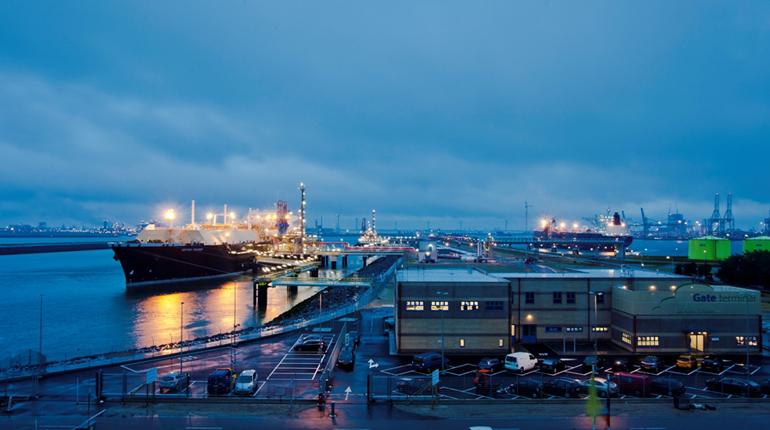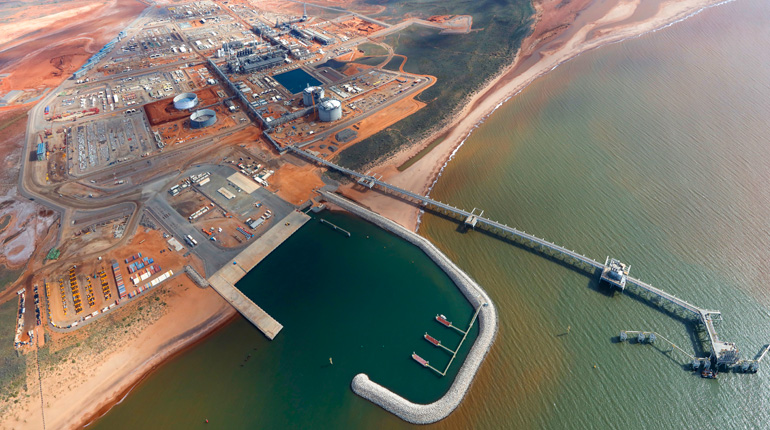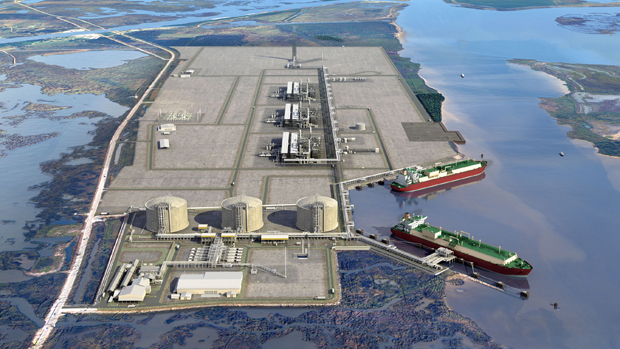 The Netherlands’ Gate LNG terminal. Many of Europe’s terminals are operating well below capacity. (Gate)
The Netherlands’ Gate LNG terminal. Many of Europe’s terminals are operating well below capacity. (Gate)
Europe’s LNG terminals are almost idle, new data shows, causing some to raise questions about whether new capacity is necessary.
The average usage rate at terminals in eight EU member states has been less than 18% since the start of the year – around 3% lower than the same period last year, according to Gas Infrastructure Europe.
Although LNG imports are seen as key to strengthening Europe’s security of supply, some are questioning whether new investment in import capacity is needed.
The European Commission’s list of Projects of Common Interest (PCI) features several LNG import projects, including the Shannon terminal in Ireland, Croatia’s Krk terminal, the Gothenburg terminal in Sweden, two in Estonia and one in northern Greece. Moreover, the commission’s LNG strategy, unveiled in February, this year emphasised the need to build infrastructure for all EU member states to access LNG, either directly or indirectly via other EU countries.
The Council of European Energy Regulators (CEER) said in an official response to the strategy, dated 13 May, that the commission should differentiate between the additional infrastructure needed for normal circumstances and that needed to mitigate supply disruptions.
“CEER would like the commission to clearly differentiate whether new infrastructure is needed under normal circumstances to supply European gas demand, or only in case of supply disruptions,” the paper said.
“In CEER’s opinion, under normal circumstances, current infrastructure is sufficient to satisfy demand in most regions, as demonstrated by the low level of congestion across Europe,” it added.
CEER said the commission should identify precisely where bottlenecks appear and to what extent they could be addressed by better access to the LNG market. Moreover, new LNG projects with PCI status for which there is no market demand should be subject to a cost-benefit analysis to weigh the security of supply benefits against costs, it said.
“To avoid stranded costs, CEER recommends ensuring an efficient use of current infrastructure as much as possible, especially in a context of decreasing gas demand in Europe,” it said.
Midcat connection
The low utilisation rate of European LNG terminals can be partly explained by the fact that there are not enough interconnections between EU countries. Spain, for example, has plenty of LNG import capacity but limited interconnectivity with France.
To this end, the commission has identified the Eastern Axis interconnection point between the Iberian Peninsula and France at Le Perthus – known as Midcat – as a PCI project and granted it €5.7 million ($6.43 million) to carry out further studies.
“It depends on where the LNG terminal is located,” Arno Behrens, head of energy at Brussels-based thinktank the Centre for European Policy Studies, told Interfax Natural Gas Daily. “The terminal in Lithuania has been useful for diversifying supplies and for renegotiating supply contracts with Gazprom. The usefulness of some other terminals will depend on better interconnections between European countries, such as between the Iberian Peninsula and France.”
A low usage rate does not necessarily mean a stranded asset, Behrens added. “An LNG terminal can be economically viable even with a low utilisation rate if it is used for arbitrage purposes. But with gas demand having dropped significantly since 2010, the question is if we need all these terminals. In some cases a smaller and more flexible floating LNG terminal can be a better alternative,” he said.
The CEER paper pointed out that having available capacity at a terminal does not necessarily mean the market can deliver gas in the short term. It can take days or even weeks to import a spot cargo, and contractual clauses may slow down the redirection of LNG vessels to high demand markets, it said.
“Even if the commission encourages discussions with major LNG suppliers and consumers, the availability of LNG, which is linked with commercial aspects of the LNG chain, is not precisely foreseen in the commission’s analysis,” CEER added.
In recent years LNG has accounted for around 10% of European gas imports, according to data from the commission, with most of the cargoes coming from Qatar, Algeria and Nigeria.
However Europe’s dependence on imports is expected to grow in the future because of declining domestic production from the Groningen field in the Netherlands and from the North Sea. New potential suppliers of LNG to Europe are also emerging, such as the United States, which Brussels expects to become a significant exporter before the end of the decade.








Talk to us
Natural Gas Daily welcomes your comments. Email us at [email protected].